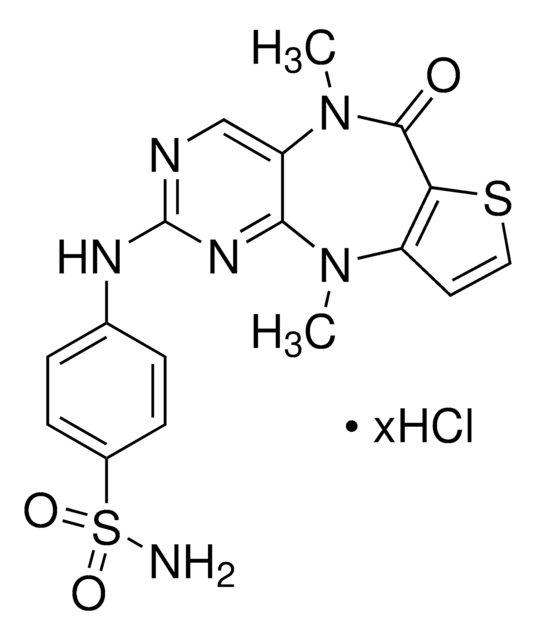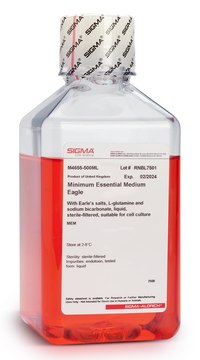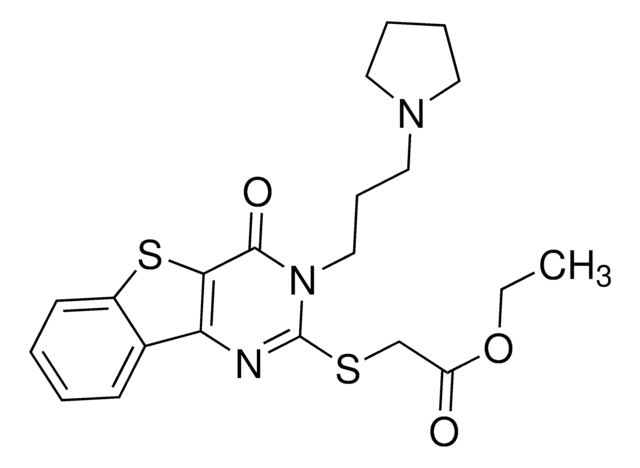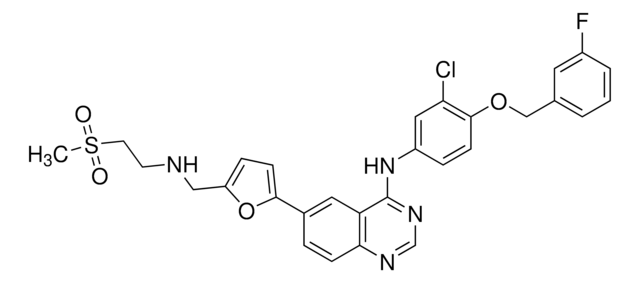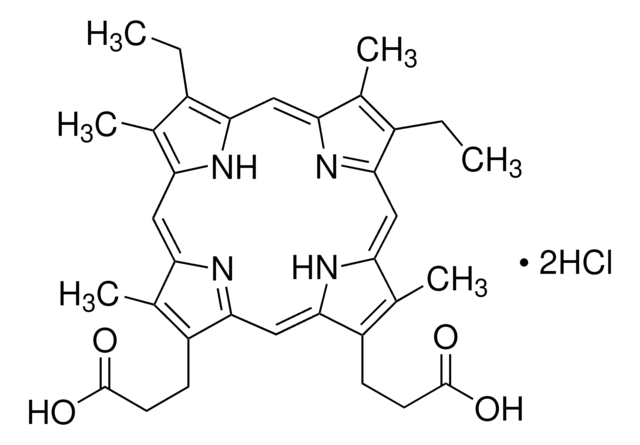SML0534
Verteporfin
≥94% (HPLC), powder, YAP-TEA domain interaction inhibitor
Synonym(s):
(4R,4aS)-rel-18-ethenyl-4,4a-dihydro-3,4-bis(methoxycarbonyl)-4a,8,14,19-tetramethyl-24H,26H-Benzo[b]porphine-9,13-dipropanoic acid monomethyl ester, Visudyne, trans-18-ethenyl-4,4a-dihydro-3,4-bis(methoxycarbonyl)-4a,8,14,19-tetramethyl-23H,25H-Benzo[b]porphine-9,13-dipropanoic acid monomethyl ester
About This Item
Recommended Products
Product Name
Verteporfin, ≥94% (HPLC)
Quality Level
Assay
≥94% (HPLC)
form
powder
storage condition
desiccated
protect from light
solubility
DMSO: 2 mg/mL, clear (warmed)
storage temp.
−20°C
SMILES string
CC(C(/C=C1[C@@]2(C)C(/C(N/1)=C/3)=CC=C(C(OC)=O)[C@H]2C(OC)=O)=N/4)=C(CCC(OC)=O)C4=C\C5=C(CCC(O)=O)C(C)=C(/C=C6C(C=C)=C(C)C3=N/6)N5.CC(C(/C=C7[C@@]8(C)C(/C(N/7)=C/9)=CC=C(C(OC)=O)[C@H]8C(OC)=O)=N/%10)=C(CCC(O)=O)C%10=C\C%11=C(CCC(OC)=O)C(C)=C(/C=C%12C(C=C)
InChI
1S/2C41H42N4O8/c1-9-23-20(2)29-17-34-27-13-10-26(39(49)52-7)38(40(50)53-8)41(27,5)35(45-34)19-30-22(4)24(11-14-36(46)47)32(44-30)18-33-25(12-15-37(48)51-6)21(3)28(43-33)16-31(23)42-29;1-9-23-20(2)29-17-34-27-13-10-26(39(49)52-7)38(40(50)53-8)41(27,5)35(45-34)19-30-22(4)25(12-15-37(48)51-6)33(44-30)18-32-24(11-14-36(46)47)21(3)28(43-32)16-31(23)42-29/h2*9-10,13,16-19,38,43,45H,1,11-12,14-15H2,2-8H3,(H,46,47)/b31-16-,32-18-,34-17-,35-19-;31-16-,33-18-,34-17-,35-19-/t2*38-,41+/m00/s1
InChI key
YHNBVDZVUQFVLS-SKJZPIBWSA-N
Looking for similar products? Visit Product Comparison Guide
Application
Biochem/physiol Actions
Other Notes
Storage Class Code
11 - Combustible Solids
WGK
WGK 3
Flash Point(F)
Not applicable
Flash Point(C)
Not applicable
Choose from one of the most recent versions:
Already Own This Product?
Find documentation for the products that you have recently purchased in the Document Library.
Customers Also Viewed
Related Content
DISCOVER Bioactive Small Molecules for Nitric Oxide & Cell Stress Research
Our team of scientists has experience in all areas of research including Life Science, Material Science, Chemical Synthesis, Chromatography, Analytical and many others.
Contact Technical Service